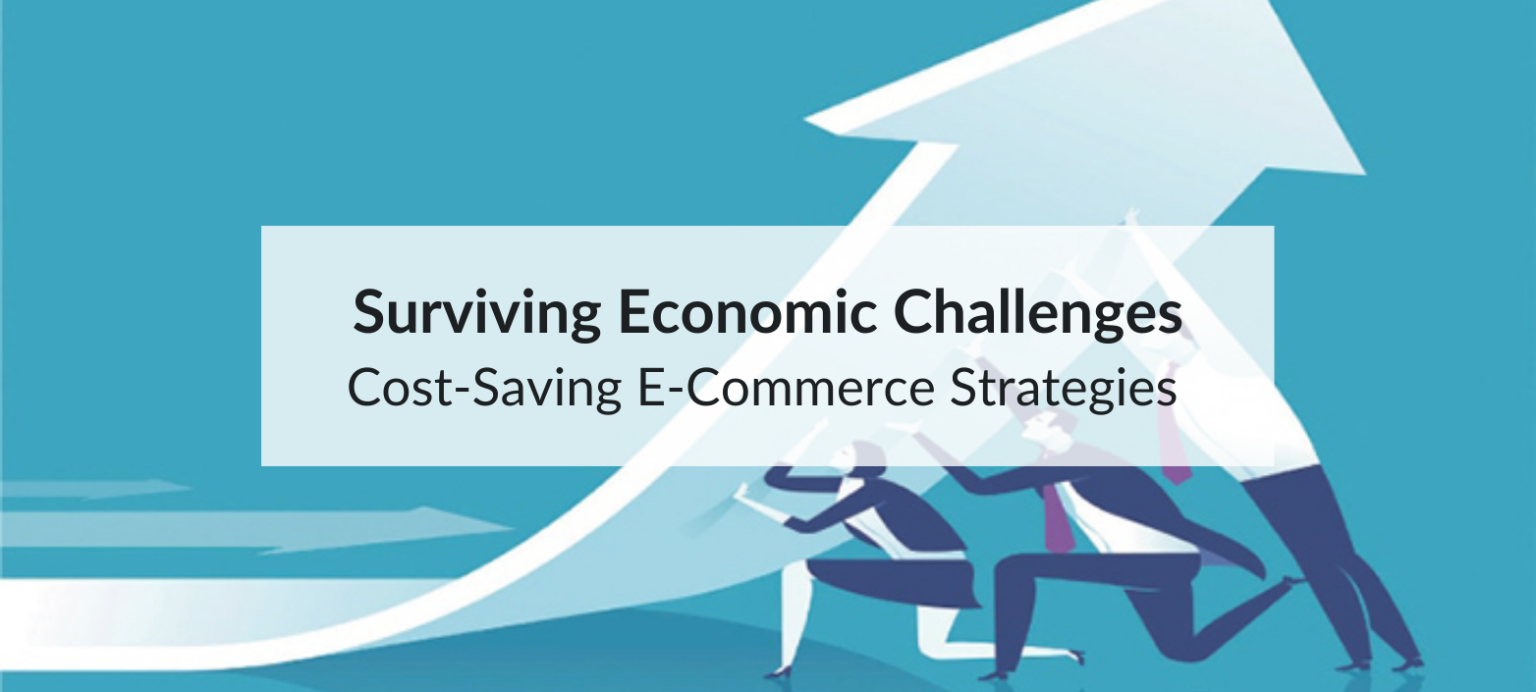Running an e-commerce business during economic uncertainty requires strategic thinking to maintain profitability while minimizing expenses. From optimizing your e-commerce website costs to streamlining operations, this guide provides actionable strategies to help your business thrive even in challenging times.
Economic pressures like rising inflation, increased energy costs, and global supply chain disruptions have made it more critical than ever for e-commerce businesses to adopt cost-saving measures. According to the Office for National Statistics (ONS), inflation in the UK reached a high of 10.1% in 2023, impacting consumer spending and increasing operational expenses for businesses. With this context in mind, let’s explore practical strategies to navigate these challenges.

1. Optimize Your E-Commerce Website Costs
Your website is the backbone of your e-commerce business. Reducing costs without compromising functionality can significantly impact your bottom line.
- Choose the Right Platform: Platforms like Magento Open Source provide cost-effective solutions for scalability without high licensing fees.
- Use Cloud Hosting: Shift to cloud hosting services like AWS or Google Cloud for flexible, pay-as-you-go models that adjust to traffic needs.
- Leverage Free Extensions: Explore free Magento extensions to add features like SEO optimization, enhanced checkout, or customer analytics without additional development costs.
Case Study: A small fashion retailer saved 30% on website expenses by migrating from a managed hosting provider to a scalable cloud hosting solution like AWS (AWS Case Study).
Industry Insight: In an interview with e-commerce strategist Laura Bennett, she emphasized, “Investing in the right tech stack upfront can save businesses thousands annually in unnecessary upgrades and maintenance costs.”
2. Reduce Marketing Costs with Automation
Marketing is a major expense for e-commerce businesses. Automating campaigns can save time and money while maintaining effectiveness.
- Email Marketing: Use platforms like Klaviyo or Mailchimp to automate segmented email campaigns.
- AI-Powered Ad Optimization: Tools like Adzooma or Smartly.io can analyze ad performance and automatically allocate budgets to high-performing ads.
- Organic Growth: Focus on improving SEO to reduce reliance on paid advertising. Tools like Ahrefs or SEMrush can guide your strategy.
Stat Highlight: According to a report by Statista, global digital ad spending reached $626 billion in 2023, with many businesses seeking automation to reduce wasteful expenditure.
3. Streamline Inventory Management
Overstocking or stockouts can lead to financial strain. Efficient inventory management minimizes waste and maximizes profitability.
- Invest in Inventory Management Tools: Use platforms like Brightpearl or Magento Inventory Management to monitor stock levels in real time.
- Forecast Demand Accurately: Leverage data analytics to predict sales trends, especially during peak seasons.
- Adopt Just-In-Time Inventory: Reduce storage costs by ordering stock closer to the time it’s needed.
Example: An electronics retailer implemented predictive analytics to manage inventory, reducing excess stock by 20% and saving thousands annually (Forbes Analytics Case Study).
Expert Comment: “Inventory mismanagement is one of the biggest profit drains in e-commerce. Predictive tools are not just helpful—they’re essential,” says logistics consultant James Porter.
4. Lower Payment Processing Fees
Transaction fees from payment gateways can add up quickly, especially for high-volume e-commerce businesses.
- Negotiate Fees: Reach out to your payment processor to negotiate lower transaction fees based on your volume.
- Use Cost-Effective Gateways: Compare rates from providers like Stripe, PayPal, or Square to find the most affordable option for your business model.
- Offer Alternative Payment Methods: Encourage customers to use low-cost payment methods, like bank transfers, when available.
Stat Highlight: Payment processing fees average 2-3% per transaction. For businesses processing high volumes, even a slight reduction can result in significant savings.
5. Optimize Shipping and Logistics
Shipping is a significant expense for e-commerce businesses. Optimizing logistics can help cut costs while maintaining customer satisfaction.
- Partner with Third-Party Logistics Providers (3PLs): Outsource warehousing and delivery to save on operational costs.
- Use Shipping Automation Tools: Platforms like ShipStation or ShipperHQ can compare rates across carriers and identify the most cost-effective options.
- Negotiate Shipping Rates: Many carriers offer discounts for high-volume businesses; reach out to negotiate better rates.
Stat Highlight: A report by Pitney Bowes found that global parcel volume reached 159 billion in 2023, and rising shipping costs are a top concern for 67% of e-commerce businesses.
6. Focus on Retaining Existing Customers
Acquiring new customers is more expensive than retaining existing ones. Focus on building loyalty to drive repeat purchases.
- Loyalty Programs: Use tools like Smile.io to implement point-based rewards programs for repeat customers.
- Personalized Experiences: Leverage AI tools to provide personalized recommendations, increasing the likelihood of repeat purchases.
- Reactivation Campaigns: Send targeted offers to inactive customers to encourage re-engagement.
E-Commerce Insight: A 5% increase in customer retention can boost profits by 25% to 95%, according to Bain & Company.
7. Automate Routine Tasks
Automation reduces labor costs while improving efficiency in areas like order processing, customer service, and inventory updates.
- Chatbots for Customer Support: Tools like Tidio or Zendesk AI can handle basic inquiries, reducing the need for large support teams.
- Order Fulfillment: Integrate automation into your order management process to reduce manual input and errors.
- Content Automation: Use tools like Jasper or Grammarly to streamline content creation for product descriptions or blog posts.
Example: An online bookstore automated customer support inquiries using chatbots, reducing operational costs by 25% while maintaining a high satisfaction rate (Zendesk Case Study).
8. Outsource Non-Core Activities
Outsourcing can help you focus on core business functions while cutting costs.
- Customer Service: Outsource to providers specializing in e-commerce support for cost-effective and scalable solutions.
- Website Maintenance: Work with freelance developers or agencies for maintenance instead of hiring a full-time team.
- Product Photography: Use platforms like Fiverr or Upwork to find affordable professionals.
9. Reduce Returns with Accurate Product Descriptions
Returns not only reduce profits but also increase operational costs. Detailed product descriptions and high-quality images can minimize returns.
- Include Videos: Videos showcasing product features can clarify expectations for customers.
- Use AR Tools: Augmented reality (AR) features, such as virtual try-ons, help customers make informed purchase decisions.
Example: An online furniture retailer implemented AR visualization tools and reduced returns by 18% within six months (AR Post Case Study).
10. Regularly Audit Expenses
Conduct regular audits of your business expenses to identify areas for cost reduction.
- Review Subscriptions: Cancel unused software subscriptions or consolidate tools with overlapping features.
- Monitor Utility Costs: Optimize utilities for physical spaces like warehouses to reduce operational expenses.
- Benchmark Industry Costs: Compare your expenses to industry benchmarks to identify areas for improvement.
Expert Insight: “Economic uncertainty demands agility. Regular audits can uncover hidden inefficiencies that, once resolved, can significantly impact profitability,” says financial analyst Rebecca Turner.
By implementing these cost-saving strategies, e-commerce businesses can navigate economic challenges while maintaining profitability. Optimizing your e-commerce website costs, automating processes, and retaining loyal customers are just a few ways to ensure your business remains resilient.

